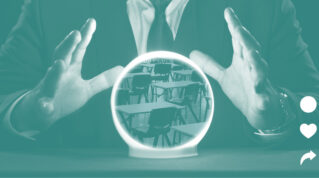GCSE results for the first summer exams since the pandemic began are out this morning – here’s your usual handy Schools Week round up of the key trends.
All the findings below are based on figures for 16-year-olds in England only, unless stated otherwise.
1. Grade 5+ pass rate is 60.3%
Historically we have always highlighted the grade 5 and above pass rate – considered a “strong” pass – because it’s how schools are judged in league tables, despite grade 4 being a ‘standard’ pass.
The grade 5 pass rate has dropped from 62.8 per cent in 2021 – when teacher assessed grades were awarded – to 60.3 per cent.
However this is still higher than 2019 – the last year of formal summer exams – when this sat at 53.5 per cent.
The number of grades that are 4 and above has fallen from 79.1 per cent in 2021 to 75.3 per cent this year. But again this is still above the 69.9 per cent seen in 2019.

2. Top grades fall, but still way up from 2019
The proportion of top grades (7 to 9, which is equivalent to A/A*) has fallen by 3 percentage points – from 30 per cent this year to 27 per cent in 2021.
Looking at the actual numbers, this is a 9 per cent fall from last year. But it is up from 21.8 per cent in 2019.
Meanwhile, grade 9s dropped from 7.7 per cent last year to 6.8 per cent – a 0.9 percentage point fall. But again much higher than the 4.7 per cent awarded in 2019.
This works out as an 11 per cent drop in grade 9s awarded since last year.

3. English see bigger drop in top grades than maths
The number of grade 7s and above in maths has fallen from 25.9 per cent in 2021, to 24 per cent this year. In 2019, this was 20.4 per cent
The maths grade 5-pass rate was 56.6 per cent, down from 59.1 per cent in 2021. In 2019, this was 50.1 per cent.
Top grades in English fell from 26.3 per cent to 23.5 per cent. But up from 17.4 per cent in 2019.
English grade 5-pass rate sat at 61.1 per cent. This is lower than 2021 63.6 per cent but much higher than 53.4 per cent in 2019.
4. Nearly 3x more straight 9s since the last exams
This year, 2,193 students achieved all grade 9s. This is a 40 per cent drop from last year – when a staggering 3,606 students got the full flush.
In 2020, 2,645 achieved straight 9s. But in 2019, this was just 837 – marking a 162 per cent rise compared to this year.
Over two-thirds of these students were girls – 67 per cent – compared to 33 per cent of boys. Thirteen students achieved 9s in 12 or more GCSEs.

5. North-south attainment gap widens
The attainment gap between the north east and London has widened slightly for grade 7 and above. The gap was 9.3 percentage points in 2019, 10 in 2021 and this year it has crept up to 10.2 percentage points difference.
It’s bound to trigger scrutiny about whether this was down to the pandemic, which hit some areas harder than others.
The proportion of top grades this year in London was 32.6 per cent – whereas there was just 22.4 per cent in the north east.
This compares to 34.5 per cent in the capital last year and 24.5 per cent in the north east in 2021.
The gaps were also stark in 2019, when the north east top grades was 16.4 per cent compared to 25.7 per cent in London.

6. No change in the most popular subjects
Double award science, maths, English, English Literature and History still have the highest entries across the UK for all ages.
Spanish is no longer the subject with the highest percentage growth: entries decreased by 1.7 per cent from 114,795 to 112,845 following a continuous period of growth since 2018.
French also declined by 1.9 per cent and German dropped by 1.7 per cent.

The gap in entry size between geography and history has narrowed in 2022. Geography increased by 2.7 per cent while history saw a slight decline 0.9 per cent.
7. Girls do better than boys at the top
Overall outcomes at all key GCSE grades are higher for girls than boys – which has been the case for several years across the UK at all ages.
This year, top grades for girls were 30 per cent compared to 22.6 per cent for boys. At grade 4, this was 76.7 per cent for girls compared to 69.8 for boys.
This means the gap between boy and girl outcomes at grade 7 have narrowed by 1.6 percentage points since last year. But has widened at grade 1.

8. Much bigger drop in top grades at private schools
Private schools have seen the percentage of top grades drop from 61.2 per cent to 53 per cent – an 8.2 percentage point gap since 2021.
This compares to a 2.4 percentage point drop for academies in the last year.
However a recent study urged caution on drawing the conclusion that this shows private schools “fiddled” their grades more than others during Covid years.
But grades at grammar schools – which are similarly likely to have more grade 7 and above pupils – held up much better, with just a slight fall.
















private school generally take an easier paper which in turn leads to better results
all students should sit the same paper to create a level playing field